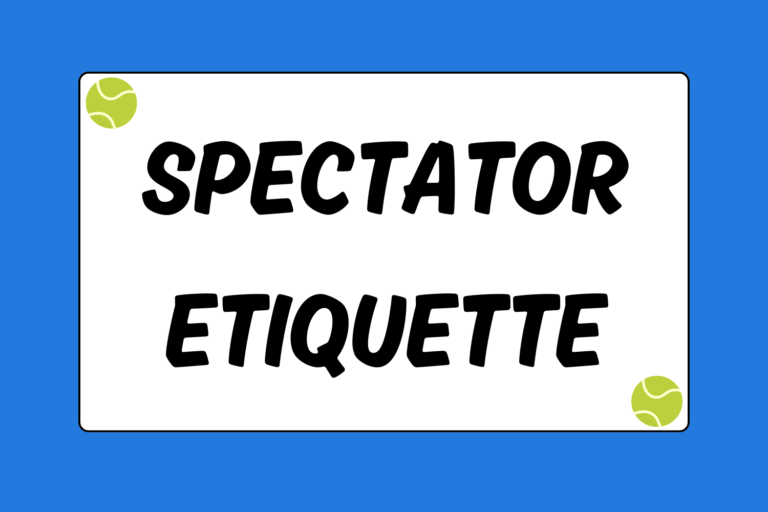Without a firm grip on your tennis racquet, controlling your shots would be nearly impossible and the racquet would likely fly out of your hand like a javelin. So when your grip starts to wear down, it’s important that you either re-grip your handle entirely, or purchase an overgrip. The rest of this guide explains how to choose and wrap a replacement grip.
What to Look for in a Grip
There are four main factors to consider when choosing a tennis overgrip: Tack, moisture absorbance, price, and lifespan. Ideally, you want to find an inexpensive, long-lasting, and highly absorbent grip that sticks softly to your hand. Most brands, however, offer some combination of these attributes, forcing players to experiment with different manufacturers, makes, and products. If you know what to look for, you’ll find the perfect overgrip in no time.
Hot Tip: Fatten the Handle
Casual players will be disinclined to buy a brand-new racquet just because the handle is small. However, a small handle will move around as you swing, minimizing your shot control. If your racquet handle’s too small for your hand, applying an overgrip is an easy way to solve the problem.
Tack
The term “tack” refers to the “stickiness” of the overgrip. An extremely tacky grip will adhere to your hands, normally making it feel softer and easier to grip. Products don’t usually rate the level of tackiness, so the box won’t include a numerical measurement quantifying it. Instead, you’ll have to demo the overgrip to get a feel for how well it sticks to your hand, and then determine what suits your preference.
Moisture Absorbance
Moisture absorbance refers to an overgrip’s ability to soak up moisture, like sweat and water. This “spongy” quality is extremely important. You need to be able to grip the racquet comfortably and securely as a match drags on into the late sets. Some overgrips lose their tacky feeling as your hands become sweaty, so you need to find a grip that can endure the rigors of an arduous match and retain its tack. Additionally, overgrips that absorb sweat and cushion the hand tend to minimize shock vibrations as you hit the ball.
Price & Lifespan
Like all tennis products, cost is always a primary consideration. While it may be tempting to reach for the least expensive overgrip, don’t sacrifice quality for convenience. Low-quality overgrips won’t last more than four matches, so you’ll have to change them out constantly. High-quality grips, on the other hand, can last several weeks, only needing to be replaced because they look somewhat worn-out.
Some overgrips are sold in bulk and can be slightly more affordable when purchased in packs of 15 or 30. But, packs of three are more common. Choose a grip that retains its tacky feeling, absorbs moisture, and has a long lifespan, rather than pocketing the least expensive overgrip you can find.
How to Wrap the Grip
Now that you’ve found the right grip, you’re all set to wrap your racquet handle. However, there truly is an art to applying an overgrip. Some players are very particular about how they wrap, and it can take many attempts to master. Here are the basics:
- Remove the plastic wrapping from the replacement grip, and then peel off the plastic from the sticky adhesive tape. Stick the end of the adhesive tape to your shirt, a nearby table, a bench, etc.
- Hold the racquet in your non-dominant hand with the handle pointing up.
- Place the small end (sometimes it’s tapered) of the overgrip along the bottom of the handle — it should be as close to the end cap as possible.
- Keep the grip taut as you twist the racquet and wrap the tape around the handle. Lay the grip slightly thicker near the bottom. Make the first few wraps close together, but not so thick that it bulges out.
- With your non-dominant hand, keep pressure on the tape so it stays taut as you twist the racquet. You don’t want any wrinkles.
- Once you’ve completed the first full wrap, the rest is easy: Keep twisting and wrapping at an upward angle. There should be a slight overlap on each wrap, around a quarter of an inch.
- Once you reach the top of the handle, you’re almost ready to seal the grip with the sticky tape. If you have some extra overgrip, go ahead and cut it off first. You could also re-wrap the entire handle again, making it tighter. Then wrap the sticky tape straight around the top end of the overgrip.
Mental Edge
Wrapping the bottom of the handle is the most important part of the process because this is the area of the racquet you grip the most. Go slowly to start, and be sure to lay on a slightly thicker layer near the end cap. You won’t need to be as precise as you work your way up the handle.
Wrap it Up
Choosing an overgrip and applying the replacement onto your racquet doesn’t exactly involve quantum physics. It’s a relatively simple process, but it’s an important skill nonetheless. If you’re in the middle of a match and you’re struggling with your grip, you need to have an overgrip in your bag, and you need to know how to apply it quickly.





